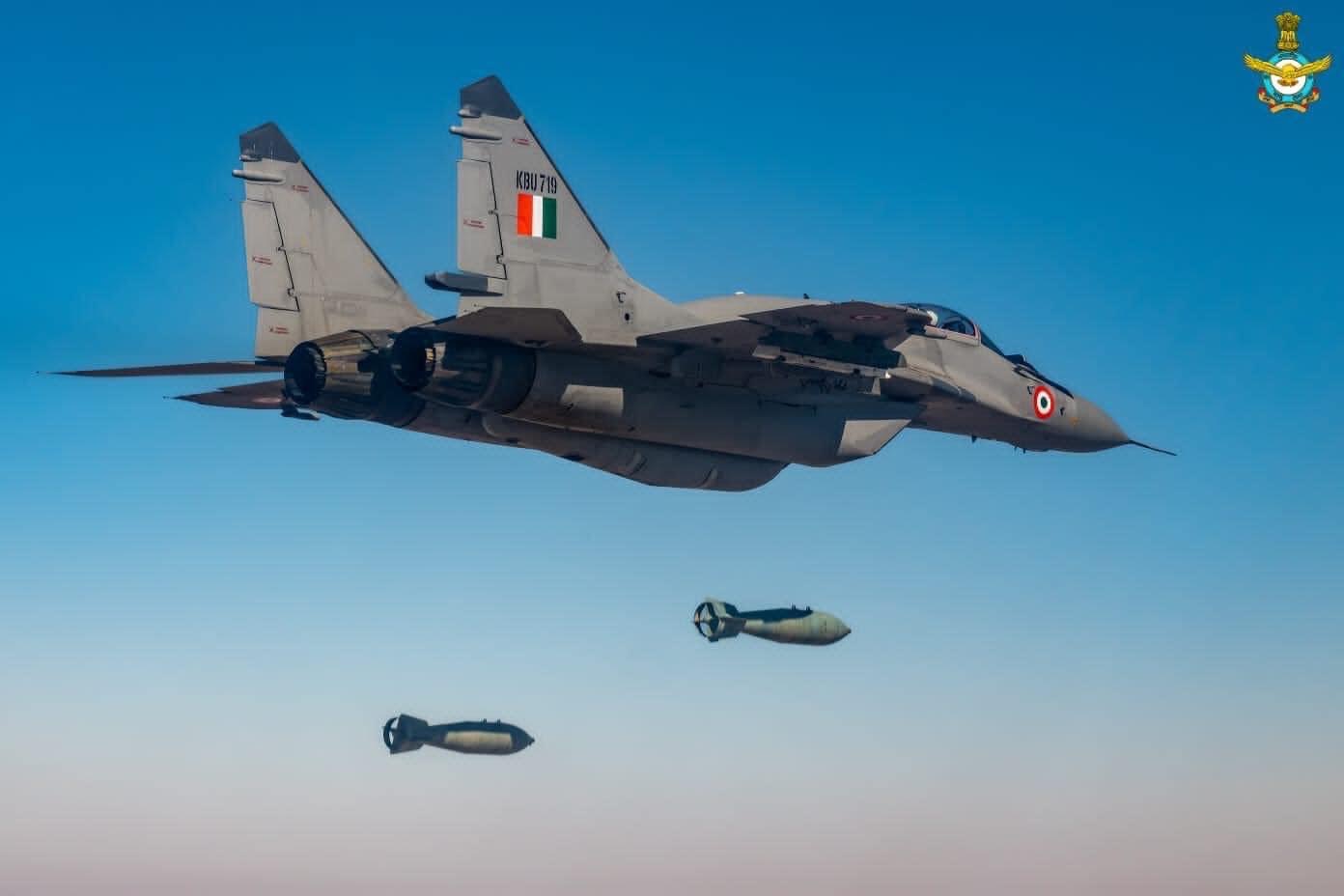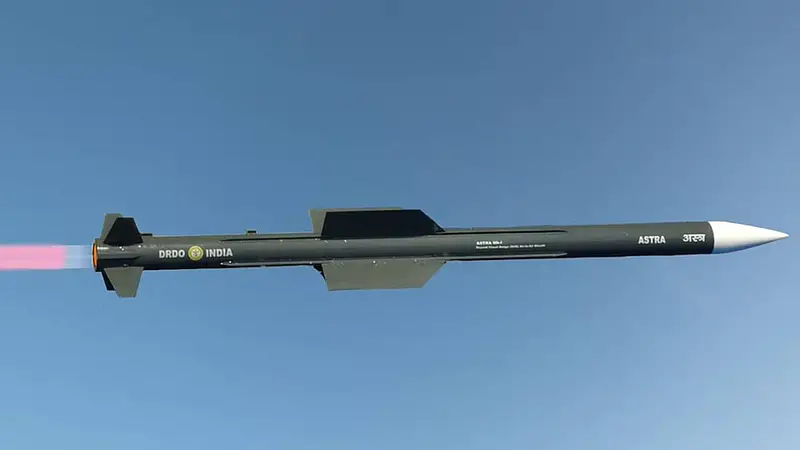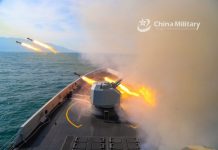The last few days have been quite eventful for the Indian Air Force (IAF). On the one hand, there are unconfirmed reports that the Air Force may be asked by the government to cut down on its planned addition of Medium-Range Fighter Aircraft MRFA requirement from 114 units to just 57 units, which, in turn, will be will be “Make in India” with the transfer of technology from the original equipment manufacturer (OEM) to an Indian company of its choice.
This decision, if true, is likely to tilt the scale further in favor of the French Rafale, the fighter aircraft, which, as the EurAsian Times has been pointing out, was already ahead in the race vis a vis its competitors from the US, Russia and Europe.
On the other hand, the Indian government (Ministry of Defence or MoD) is doing everything possible to give the Air Force the best of the world’s missiles for its armor. In fact, the school of thought that is prevailing in India’s MoD at the moment gives more emphasis to the weapons that the platform (aircraft) will carry than to the platform itself.
Secondly, while the IAF can always be proud of possessing the ever-improving Brahmos Cruise Missile, one of the world’s fastest, and the similar powerful ones procured from abroad or being manufactured in collaboration with the foreign OEM (Python 4, Python 5, Hammer AASM and Novator KS 172 etc.), it can now also be endowed with equally deadly missiles that are indigenous, thus making the force less dependent on foreign OEMs.
In what is said to be a major boost to Prime Minister Narendra Modi’s vision of ‘Aatmanirbhar Bharat’ (Self-Reliant India), the MoD signed on May 31 a contract with Bharat Dynamics Limited (BDL) for the supply of ASTRA MK-I Beyond Visual Range (BVR) Air to Air Missile (AAM) and associated equipment for the IAF & Indian Navy at a cost of Rs 2,971 crore (approximately $382.96 million) under Buy (Indian-IDDM) category.
Until now, the technology to manufacture missiles of this class indigenously was not available. ASTRA MK-I BVR AAM has been indigenously designed & developed by Defence Research and Development Organisation (DRDO) based on the Staff Requirements issued by the IAF catering for Beyond Visual Range as well as Close Combat Engagement reducing the dependency on foreign sources.

Air to Air missile with BVR capability provides large Stand-Off Ranges to own fighter aircraft which can neutralize the adversary aircraft without exposing themselves to adversary Air Defence measures, thereby gaining & sustaining superiority of the Air Space. This missile is technologically and economically superior to many such imported missile systems.
Astra Missile
‘Astra BVRAAM’ is designed to provide the power needed by a modern combat aircraft for dominating an air space. It can be launched irrespective of the relative position of the target with respect to the missile (and the aircraft launching it).
Astra has advanced Electronic Counter Counter Measures (ECCM) features that improve the missile’s target tracking capability by reducing the effect of electronic countermeasures on the enemy targets in jamming environments. The ECCM features give the missile capability to overcome defensive measures (ECM) attempted by the enemy.
Further, it also has high effectiveness in multi-target scenarios and is equipped with an indigenous RF seeker-based active radar terminal guidance system. It offers the pilot option to choose between “Lock on Before Launch – LOBL” and “Lock on After Launch – LOAL” and later allows the aircraft to shoot and scoot to safety after firing the missile in the direction of the target.
While evasive measures in most modern combat aircraft involve up to 9g forces (positive, vertical), ‘Astra BVRAAM’ has been designed to carry out maneuvers involving forces exceeding 30g, thus enabling superb maneuverability against the latest generations of supersonic combat fighters.
With all these advanced features the indigenous Astra BVRAAM is capable of operating under all weather conditions, both day and night and offers high overall reliability and a very high ”Single Shot Kill Probability – SSKP”.
The length of the weapon system is 3.8m, while its diameter is 178mm, and the overall launch weight is 160kg. Its low all-up weight provides high launch range capability.
Astra MK-I missile and all associated systems for its launch, ground handling & testing have been developed by the DRDO in coordination with the IAF. The missile, for which successful trials have already been undertaken by the IAF, is fully integrated on the Su 30 MK-I fighter aircraft & will be integrated with other fighter aircrafts such as Mirage-2000, MIG-29, and the Light Combat Aircraft (Tejas) in a phased manner. The Indian Navy will integrate the missile on the MiG 29K fighter aircraft.
The Astra missile was developed as part of the Integrated Guided Missile Development Programme (IGMDP). DRDO carried out mission analysis, system design, simulation and post-flight analysis of the weapon system.
The MK-I variant of the new air-to-air missile was first tested in May 2003, from the Interim Test Range (ITR) at Chandipur, Odisha, and a series of developmental ground tests, captive flight trials and user associate launches were conducted in varying weather conditions.

After that many trials were conducted at various places, involving Su-30 MKI combat aircraft. And the final flight tests with Su-30 MKI fighter aircraft were conducted at the same Chandipur in 2019.
The trials dealt with all possible threat scenarios, demonstrating its end game capability in combat configuration with the warhead. The missile also had a direct hit on the target at maximum range.
The Astra Mk-I has a range of 80 to 110 km in a head-on chase and can travel at 4.5 Mach speed (almost hypersonic).
The missile also has a locally developed Ku-band active radar guidance system and a 15 kg warhead. DRDO is now developing the Mk-II variant, which will have a higher range of 160km by using a dual-pulse solid-fuel rocket motor. It is based on the advanced solid fuel ducted ramjet (SFDR) engine technology that was tested in 2018, 2019 and recently in March 2021.
The Astra Mk-III, a future variant, is also being developed in collaboration with Russia. Its prototype is expected to be out soon; it will have the newly developed solid fuel ducted ramjet (SFDR) technology with a range of 350 km.
Meanwhile, the Transfer of Technology from DRDO to BDL for the production of the Astra MK-I missile and all associated systems has been completed and production at BDL is in progress.
Indian analysts say that this project will act as a catalyst for the development of Infrastructure and Testing facilities at BDL. And the MoD thinks that this project will also create opportunities for several MSMEs in aerospace technology for a period of at least 25 years.
In short, the project essentially embodies the spirit of ‘Aatmanirbhar Bharat’ and will help facilitate realizing the country’s journey towards self-reliance in Air to Air Missiles.

India Zooms Ahead
India has really come a long way since the early days of “Devil”, the first surface-to-air missile that was indigenously developed during the 1970s and had undergone a series of trials, but, much to the disappointment of the team, was not inducted into the IAF.
Apparently, the quality was not good enough for the IAF. Nevertheless, the process of development and trials of the Devil left behind very valuable lessons – technological and otherwise. And they proved handy when under the leadership of Dr. APJ Abdul Kalam (who later rose to become the country’s President) the Integrated Guided Missile Development Programme – IGMDP – created one history after another in efforts toward making India self-reliant in the arena of both strategic and tactical missiles.
For developing missiles like Astra, the Defence Research and Development Laboratory (DRDL) and its two sister laboratories – Research Centre Imarat (RCI) and Advanced Systems Laboratory (ASL), have led the design development and evaluation of missiles with the dedicated support of Terminal Ballistics Research Laboratory (TBRL), Institute System Studies and Analysis (ISSA) and the Integrated Test Range (ITR), have played a big role.
In fact, these very establishments are now working for other deadly indigenous air to air missiles for the IAF. In April, the ANTI-Tank Guided Missile (ATGM) HeliNa, the helicopter-launched version of the Nag missile, was tested both in the northern high altitude mountain regions and desert regions of Pokhran.
Like all Nags, it can also be fired in a way, which allows the pilot to just lock-on to a target, fire the missile and not track the shot. The DRDO is also working on another variant of the HeliNa, called the SANT, or the Standoff Anti-tank Guided Missile, which has an extended range of 25 kms.
The DRDO is also in the process of developing and building an indigenous anti-radiation missile, which will be capable of disabling enemy radar and transmitters. This missile is said to have a range of over 110 kms. It is called NGARM or Rudra-1.
The IAF has already started its trials. If successful and inducted, India will be the 4th country after the US, Russia & Germany to have a missile that can disable enemy radar stations and transmitters in an area.
- Author and veteran journalist Prakash Nanda is Chairman of Editorial Board – EurAsian Times and has been commenting on politics, foreign policy on strategic affairs for nearly three decades. A former National Fellow of the Indian Council for Historical Research and recipient of the Seoul Peace Prize Scholarship, he is also a Distinguished Fellow at the Institute of Peace and Conflict Studies. CONTACT: prakash.nanda@hotmail.com
- Follow EurAsian Times on Google News




